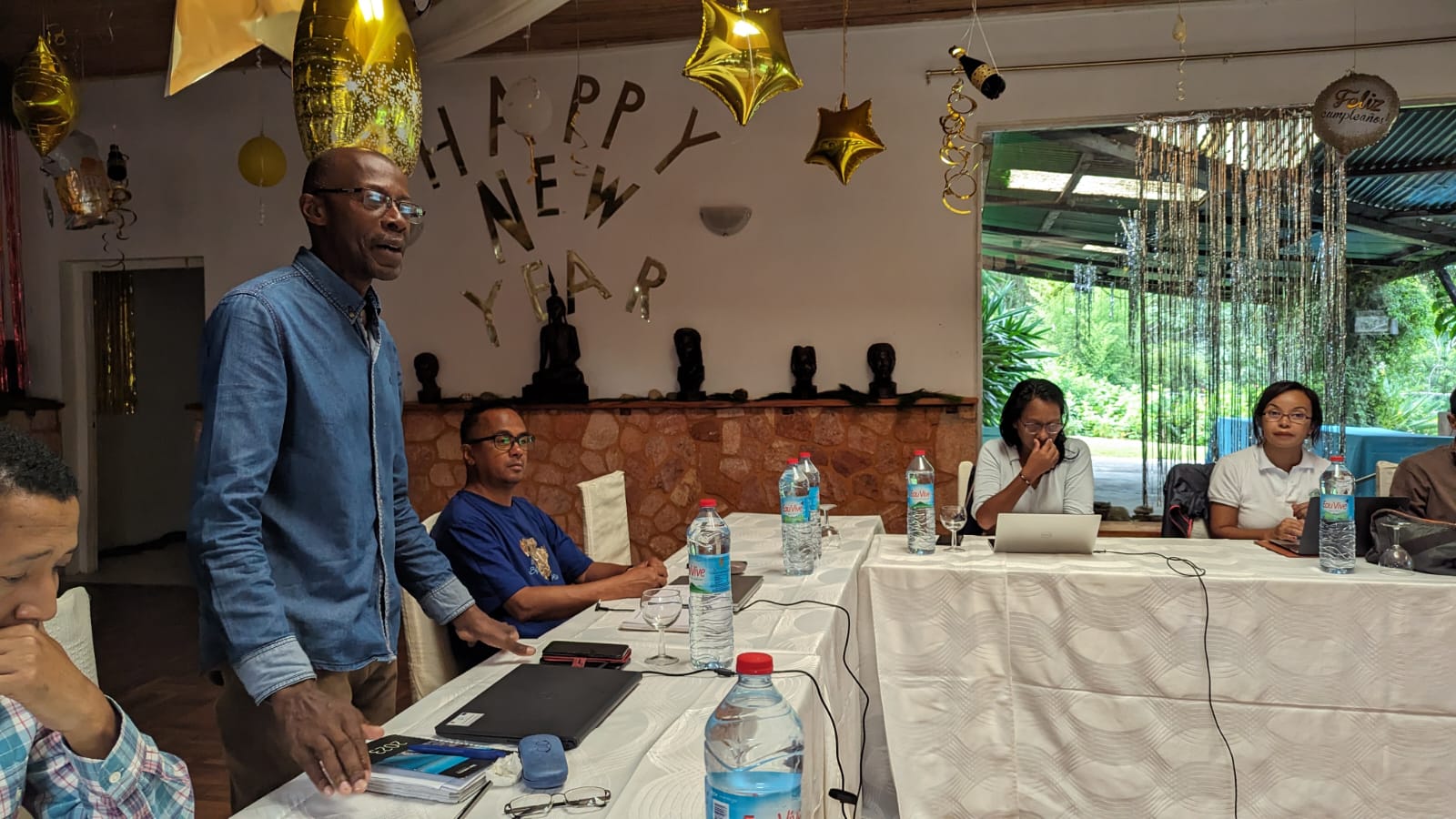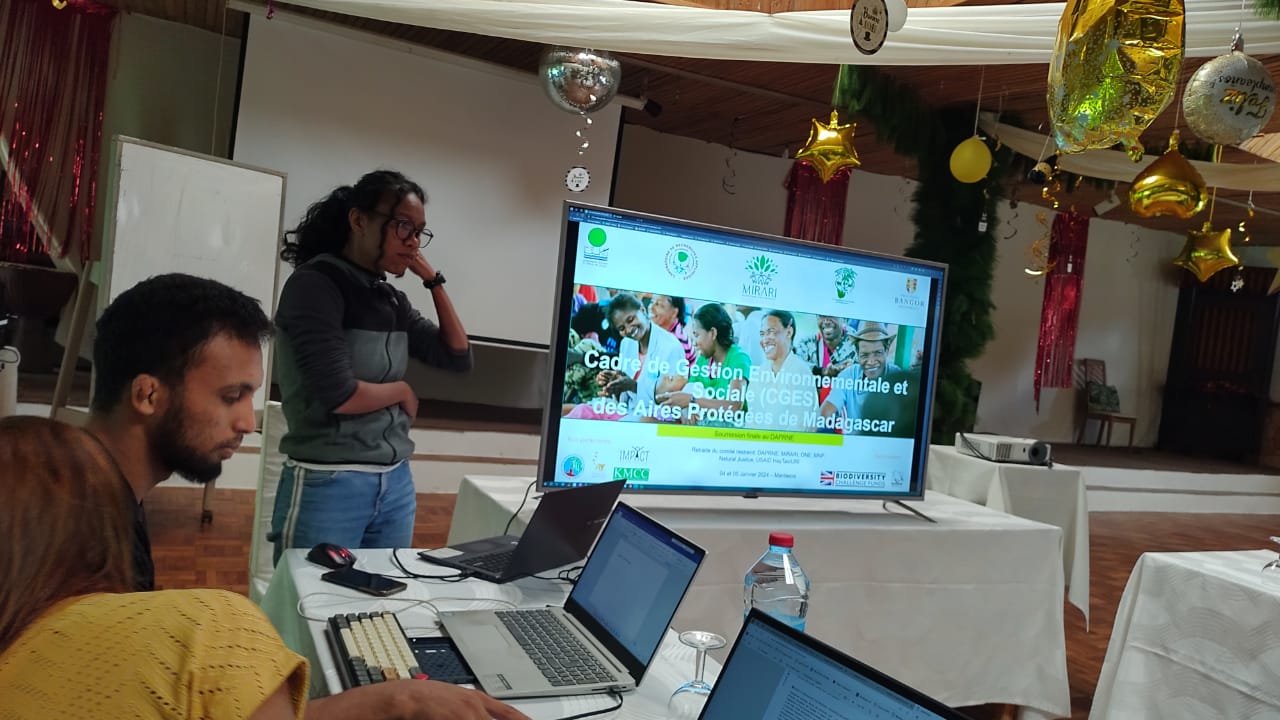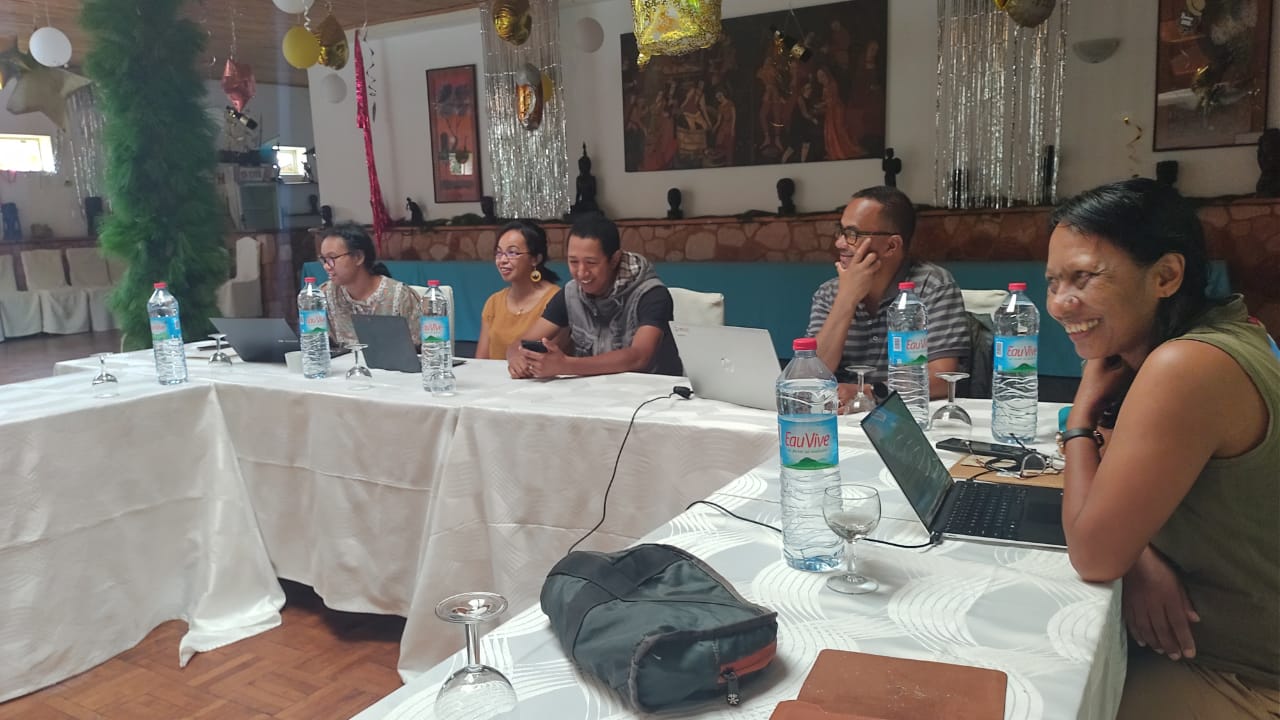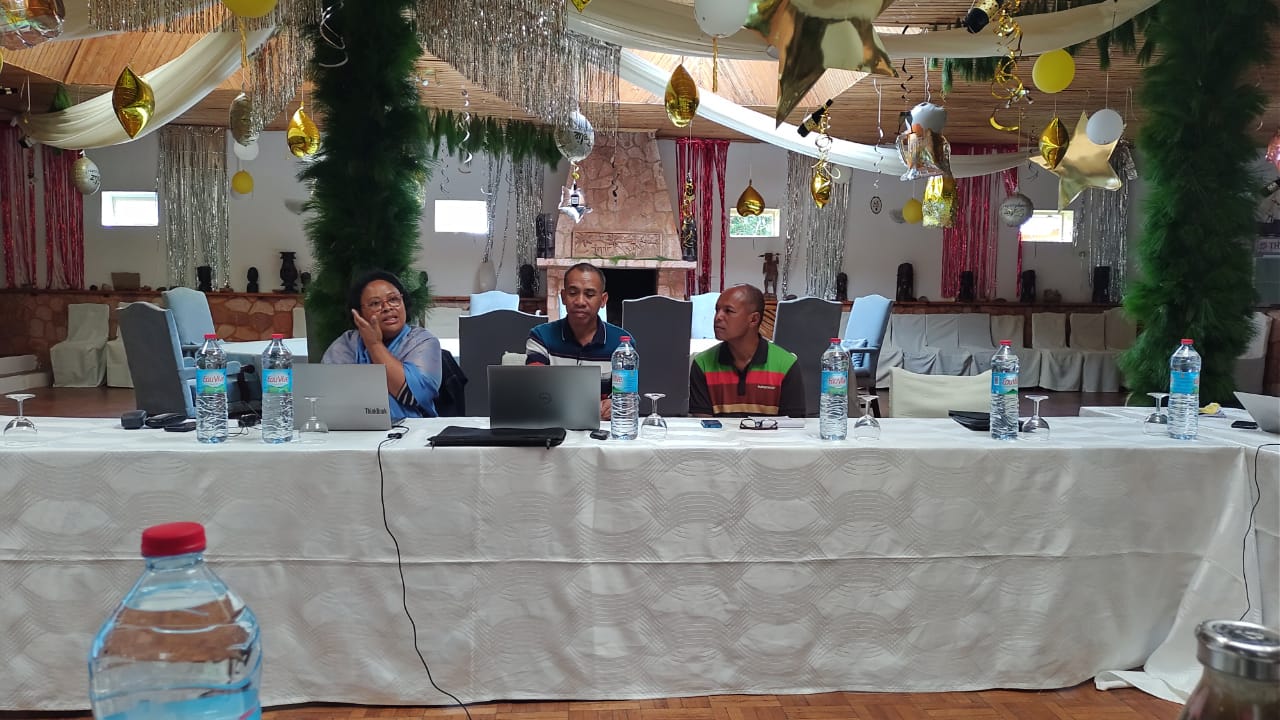By Sanda A. Rakotomalala
After three fruitful years of collaboration, we are now in the final stages of supporting the Ministry of the Environment and Sustainable Development (MEDD) in the reform of the Cadre de Gestion Environnementale et Sociale (CGES, Environmental and Social Management Framework) for Madagascar’s Protected Areas (PAs). This reform is aimed mainly at addressing the need to implement a rights-based approach to conservation and ensure local communities do not bear the cost of conservation.
For the reform process to be participatory, the Ministry established two advisory committees: a large consultative committee composed of PA managers and other stakeholders, and a working group tasked with drafting the CGES document under the lead of MiRARI’s team and chaired by the Ministry’s protected area department.

The Director of DAPRNE officially launching the two days of reflection by the restricted committee
Several experienced stakeholders contributed precious insights to the working group, including Natural Justice, Madagascar National Parks, the National Office for the Environment, and USAID – Coastal Resources Center – University of Rhode Island.
As well as meeting regularly, Mirari organised a retreat for the working group on January 4th and 5th 2024 to prepare the final draft of the CGES.
The working group has now officially submitted the final draft of Madagascar’s PAs’ CGES to the Department in charge of Protected Areas in March 2024.
The reform aimed to equip decision-makers and practitioners with science-based guidance on how to implement truly environmentally and socially equitable conservation for Madagascar’s PAs. Seven key points stood out from the reformed CGES:
Clearer key concepts and definitions were set. First, the concept of “Environmental and Social Management » especially in the context of Madagascar’s PAs, then the framework in itself, ie its value as a management document, its scope, its purpose and its use for practitioners and how it differs from usual development/conservation program’s ESMFs. Other key concepts such as social safeguard, environmental and social impact, poverty alleviation, and environmental and social management plan according to the context of Madagascar’s PAs.
The establishment of Principles and Norms for Madagascar’s PAs’ environmental and social management. These Principles and Norms were inspired by those of major international conservation and development organisations and adapted to National PA management principles and the context faced by PA managers in their practice. In total, there are 5 Key Principles and 8 Norms.
The ESMF also comprises clear technical guidelines to establish and implement Environmental and Social Management Plans (ESMP). MiRARI’s previous research and the expert knowledge of the working group informed these guidelines. The guidelines were provided for PA managers so that they can establish more rigorous methods and properly budget for the various steps in the process, including identification and assessment of the PA’s social and environmental impact, identification of Project-Affected Persons, choice and design of suitable mitigation and safeguard measures, monitoring and evaluation of the impacts and cost-effectiveness of social safeguards and development activities carried out in and around the PAs.
A review of various impact assessment methods also accompanied the technical guidelines. The review will help PA managers select the methods that best suit their financial, technical, and human resources, whilst upholding the Principles and Norms and achieving the intended goal.
Examples of social impacts pertaining to each Norm as a reference for PA managers. These examples of pre-identified impacts were established by Madagascar National Parks according to the World Bank’s Environmental and Social Framework’s Norms.
We included guidelines for the establishment of the Convention de Gestion Communautaire (CGC, or Community Management Agreement). The CGC is a PA management tool and is an agreement negotiated and then established between the PA manager and the local communities which specifically addresses local communities’ participation in the management of the PA. Although the CGC is required by the PA code, no PAs in Madagascar have yet established an agreement that fulfils the requirements of a proper CGC, due to the lack of technical guidance and funding. Given the importance of this tool to achieve equitable conservation, our project also ran a series of pilot trainings and extended technical support within our partner PAs to accompany PA managers and local communities in the establishment of their CGC (Kew Botanical Gardens in Itremo Massif PA and with Impact Madagascar in Madiromirafy-Ankirihitra Complex PA).
The Grievance Mechanism is also a key component of environmental and social management and should be specified in any CGC. The grievance mechanism of any PA should be a well-organized, structured, accessible and inclusive system for receiving and addressing complaints, conflicts, and suggestions for improvement in a timely manner. This mechanism should facilitate the resolution of concerns and grievances related to the PA’s projects. An effective grievance mechanism enables parties affected by the project to seek redress and helps to resolve issues at the earliest possible stage to enable a fair and equitable management process of the PA.

Sanda sharing the final draft of the CGES’
content details

Members of the restricted committee discussing various
aspects of the CGES

Feedback from breakout group discussions, led by Lalaina Randrianasolo from MEDD
The MEDD will now complete the last stages of the reform via the Department in charge of Protected Areas through a review of the final draft and submission of the final version to the wider consultative committee for comments After this, the text will be submitted to Madagascar’s PA System Committee (SAPM) for comments, and then a final validation by the MEDD before wide dissemination to all stakeholders.